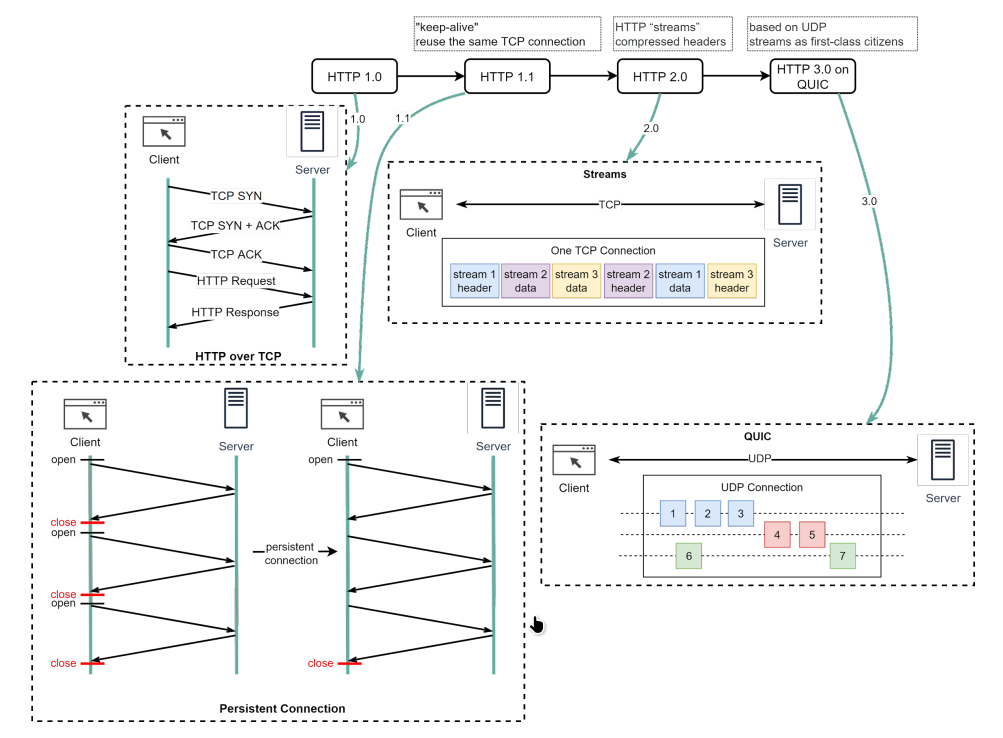link: HTTP
HTTP Versions
Overview
HTTP, or Hypertext Transfer Protocol, has seen several iterations, each bringing advancements in performance, security, and functionality. Here’s a brief overview of key versions:
-
HTTP 1.1: Introduced persistent connections, pipelining, and chunked transfer encoding, enhancing efficiency.
-
HTTP 2.0: Introduced multiplexing, header compression, and server push, significantly improving speed and performance.
-
HTTP 3.0: Utilizes the QUIC Protocol transport protocol over UDP for reduced latency and improved security compared to TCP-based protocols.
-
HTTPS: Not a separate version but an extension that adds encryption to HTTP, ensuring secure data transmission over the internet.
Understanding these versions and their differences is essential for optimizing web performance and ensuring secure communication between clients and servers.
Version Comparison
Feature HTTP 1.0 HTTP 1.1 HTTP/2 HTTP/3 Multiplexing No No Yes Yes Header Compression No No Yes Yes Server Push No No Yes Yes (with server support) Persistent Connections No Yes Yes Yes Connection Reuse No Yes Yes Yes Stream Prioritization No No Yes Yes Encryption No No Yes (over TLS) Yes (over [[QUIC Protocol Latency Higher Lower Lower Lower Protocol HTTP HTTP Binary framing layer over TCP/TLS Datagram-based protocol over UDP Overhead Higher Lower Lower Lower Compatibility Older Widely used Widely supported Emerging
History Of Each Version

History
HTTP 1.0 was finalized and fully documented in 1996. Every request to the same server requires a separate TCP connection.
HTTP 1.1 was published in 1997. A TCP connection can be left open for reuse (persistent connection), but it doesn’t solve the HOL (head-of-line) blocking issue. HOL blocking - when the number of allowed parallel requests in the browser is used up, subsequent requests need to wait for the former ones to complete.
HTTP 2.0 was published in 2015. It addresses HOL issue through request multiplexing, which eliminates HOL blocking at the application layer, but HOL still exists at the transport (TCP) layer. As you can see in the diagram, HTTP 2.0 introduced the concept of HTTP “streams”: an abstraction that allows multiplexing different HTTP exchanges onto the same TCP connection. Each stream doesn’t need to be sent in order.
HTTP 3.0 first draft was published in 2020. It is the proposed successor to HTTP 2.0. It uses QUIC instead of TCP for the underlying transport protocol, thus removing HOL blocking in the transport layer.